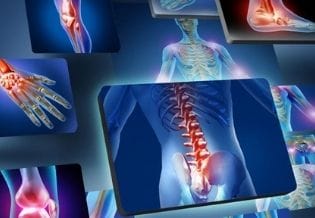Aims & Scope
International Journal of Pain Management (IJP) publishes mechanistic research on pain pathophysiology, molecular mechanisms of nociception, neural pathway alterations, and biomarker discovery that advances our understanding of how pain develops, persists, and can be modulated at the cellular and molecular level.
Core Research Domains
Molecular Pain Mechanisms
- Ion channel dysfunction in nociceptor sensitization
- Neurotransmitter and neuromodulator signaling pathways
- Inflammatory mediator cascades in pain states
- Genetic and epigenetic factors in pain susceptibility
- Receptor pharmacology and molecular targets
- Cellular stress responses in chronic pain development
Neural Circuit Pathophysiology
- Spinal cord plasticity and central sensitization mechanisms
- Descending pain modulation pathway alterations
- Thalamic and cortical processing abnormalities
- Peripheral nerve injury and regeneration mechanisms
- Glial cell activation and neuroimmune interactions
- Synaptic transmission changes in pain circuits
Pain Biomarkers & Disease Models
- Molecular biomarkers for pain phenotyping
- Neuroimaging biomarkers of pain pathophysiology
- Animal models of acute and chronic pain states
- In vitro models of nociceptor function
- Translational biomarker validation studies
- Predictive biomarkers for pain chronification
Pathophysiology of Pain Conditions
- Neuropathic pain: nerve injury mechanisms and maladaptive plasticity
- Inflammatory pain: tissue damage signaling and resolution pathways
- Cancer pain: tumor-nerve interactions and microenvironment changes
- Visceral pain: organ-specific nociceptive mechanisms
- Musculoskeletal pain: mechanotransduction and tissue pathology
- Orofacial pain: trigeminal system pathophysiology
Secondary Focus Areas
Methodological Innovations
- Novel pain assessment techniques with mechanistic insights
- Advanced imaging methods for pain pathway visualization
- Omics approaches (genomics, proteomics, metabolomics) in pain research
- Computational modeling of pain mechanisms
- Optogenetics and chemogenetics in pain circuit analysis
Biopsychosocial Mechanisms
- Stress-pain interactions: HPA axis and sympathetic nervous system
- Psychological factors: neural correlates of catastrophizing and fear-avoidance
- Sleep disruption mechanisms in chronic pain
- Comorbidity pathophysiology (pain-depression, pain-anxiety)
- Sex differences in pain mechanisms and hormonal modulation
Pharmacological Mechanisms
- Analgesic drug mechanisms of action at molecular level
- Opioid receptor signaling and tolerance mechanisms
- Non-opioid target identification and validation
- Drug-induced pain states: chemotherapy-induced neuropathy mechanisms
- Pharmacogenomics of pain medication response
Translational Pathophysiology
- Bench-to-bedside mechanistic studies with clinical correlation
- Human experimental pain models with molecular endpoints
- Reverse translation: clinical observations to mechanistic hypotheses
- Comparative pathophysiology across species
- Mechanism-based patient stratification approaches
Emerging Research Frontiers
Article Types & Editorial Priorities
Expedited Review
- Original Research Articles (mechanistic studies)
- Systematic Reviews & Meta-Analyses (mechanism-focused)
- Methods & Resources (novel techniques)
- Registered Reports (pre-registered mechanistic studies)
Regular Review
- Short Communications (preliminary mechanistic findings)
- Data Notes (datasets with mechanistic value)
- Perspectives (mechanism-based viewpoints)
- Technical Notes (methodological advances)
Rarely Considered
- Case Reports (only if exceptional mechanistic insights)
- Opinion Pieces (must address mechanistic controversies)
- Commentaries (mechanism-focused only)
- Letters to Editor (substantive mechanistic content required)
Editorial Standards & Requirements
Reporting Guidelines
- Animal Studies: ARRIVE 2.0 guidelines mandatory for all in vivo pain research
- Human Studies: STROBE for observational studies, CONSORT for interventional trials with mechanistic endpoints
- Systematic Reviews: PRISMA 2020 statement compliance required
- Diagnostic Studies: STARD guidelines for biomarker validation studies
Data & Materials Policy
- Data Availability: Raw data deposition in public repositories encouraged (e.g., Gene Expression Omnibus, Protein Data Bank)
- Code Sharing: Analysis scripts and computational models must be made available
- Materials: Reagents, antibodies, and animal models must be clearly described with catalog numbers
- Reproducibility: Detailed protocols required for novel methodologies
Ethics & Integrity
- Animal Ethics: IACUC or equivalent approval required; 3Rs principles (Replace, Reduce, Refine) must be addressed
- Human Ethics: IRB approval and informed consent documentation for all human studies
- Conflicts of Interest: Full disclosure of financial and non-financial competing interests
- Authorship: ICMJE criteria; all authors must approve final manuscript
Preprint & Prior Publication
- Preprints: Encouraged on bioRxiv, medRxiv; does not affect consideration
- Conference Abstracts: Prior presentation at conferences permitted
- Duplicate Publication: Not permitted; manuscripts must contain substantial new mechanistic data
- Related Work: Authors must disclose closely related submissions or publications
Publication Metrics & Timeline
Ready to Submit Your Mechanistic Pain Research?
If your research investigates the molecular, cellular, or neural mechanisms underlying pain pathophysiology, we want to hear from you. Review our author guidelines and submit your manuscript through our online portal.
Questions about scope fit? Contact our editorial office at [email protected] with a brief abstract for pre-submission inquiry.


